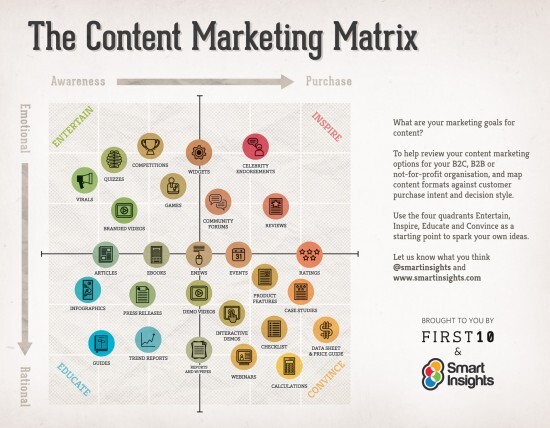In a previous post on Brandwatch I recommended 5 steps to integrate SEO and social media activities. In this follow-up I will look in more detail at some of the tools can be used.
1. Identifying themes for target keywords
There are many great tools for identifying customer search behaviour. You will be familiar with these if you work in SEO, but not necessarily social media marketing.
The best known known tool is the Google Keyword Tool. It’s an essential tool for getting inside customers’ minds, to see their concerns.
The latest version of the tool now defaults to grouping keywords to target using AdWords, but this also helps identify content themes for SEO and social media.
Google Insights for Search is no longer available, but Google Trends is still worthwhile for finding keywords that are important seasonally or the latest “Rising” trends.
Übersuggest is another keyword identification tool I’d recommend, particularly useful if you’re working to understand how search behaviour differs in different countries.
2. Define target keywords and review current effectiveness
As I mentioned in the first article, it’s important to group search behaviours which will give you ideas for topics to target across SEO and social media in your content calendar.
I recommend using this type of layout of grouped keywords which can be used for targeting across SEO and social media.
To review the effectiveness of your SEO or social media there are two key techniques using Google Analytics it’s worth applying:
- Advanced Segments can be used to isolate different types of traffic in Google Analytics, such as natural search traffic or social media traffic. This makes it easier to report on this.For example, you should set up a segment of non-brand SEO visits to show where you are attracting new visitors to your site who weren’t familiar with you – they don’t include the brand name when they search. We explain how to set this up in our 7 Step Guide to Getting more from Google Analytics.We also cover how to use the new Social Reports in Google Analytics which group social media so that setting up an Advanced Segment for Google Analytics is less necessary.
- The other technique, also relatively new, is Multi-Channel Funnels. This provides information on Assists delivered through any referring source like social media, so you can see where engagement with a site occurs initially through social media, but a lead or sale is later generated through another channel like a brand search or email.
3. Set targets for engagement and sales
To set targets, the starting point is to implement the right form of tracking in Analytics.
Although Google Analytics or the new Universal Analytics starts collecting data as soon as the site is tagged, more effort is needed to customise reports for each business.
I consult a lot on setting up customisations and dashboards and am still surprised that many companies don’t have good insight on engagement or conversion. Some of the techniques every site should be setup are:
- Define Goals – this is relatively easy for an ecommerce site where you will setup ecommerce tracking. For other site types you need to setup goals and value for lead sources like callbacks, downloads, etc.
- Define funnels – often setup for the bottom of the funnel like checkout, a full funnel should be setup which covers initial brand and service engagement also based on page types
- Advanced segments – to group visits from different traffic sources as explained above
- Dashboards – summarising trends in Volume, Quality, Value and Cost of visits from different channels
Once customisation has been setup, another tip is to compare the value generated through SEO and social media using the value measures like Per Visit Value and Per Visit Goal Value.
This is really powerful since it gives you insight on which search terms, social networks and content are really working to generate new business for you.
4. Develop content marketing approach to target keywords
At it’s simplest, a content strategy involves defining the right content to engage different audiences which leads ultimately to leads and sales.
Here’s a different type of tool to the others in this post, which we have developed to help select the right types of content.
We developed a content marketing matrix structured to help you think through the dimensions of different content based on how your audience might think and what you’re trying to achieve as a business.
What will work where your audience are more or less impulsive or rational? What does that mean for content creation and marketing goals?
Depending on the quadrant(s) that you feel drawn to for your audience, it offers a starting point for your ideas generation.
 I hope you find that helpful.
I hope you find that helpful.
5. Implement a communications strategy to use SEO and social media
Of all the techniques we have reviewed in this post, this is the most familiar to marketers. It’s essential to create an effective content calendar.
Developing a sound content calendar requires:
- Major content themes: perhaps 4 to 12 a year, depending on scale based on promoting business propositions.
- Responsibilities for content creation and workflow review
- Integration with campaigns
- Associated outreach and online and offline advertising to support this.
A nice current example of this is in the UK is the creation of the BUPA knee clinic site, which has been supported by integration with print and web advertorial on The Guardian and other sites.



